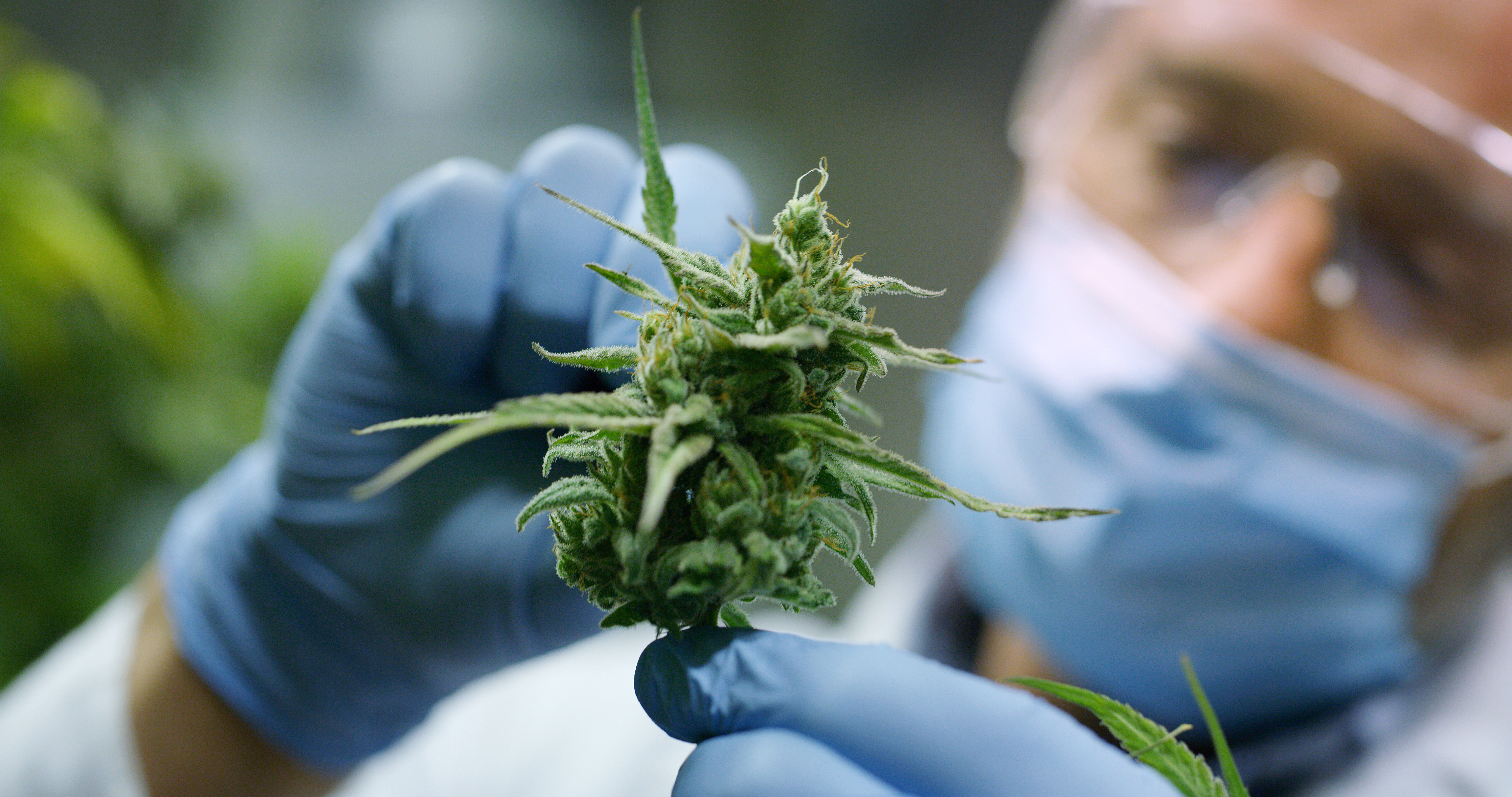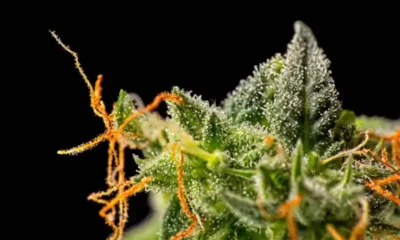Connect with us
Published
6 months agoon

As the legal cannabis industry has taken shape over time, conversations surrounding cannabis quality and potency have shifted to include the multitude of cannabis compounds, including terpenes. While research has explored how terpenes synergistically enhance the overall experience and potency of cannabis, many consumers are aware that these compounds first and foremost have a strong relationship to the flavor and aroma of cannabis strains.
Though, there may be a collective misunderstanding around terpenes in this regard. We may think we know the ins and outs of these crucial cannabis compounds, but a new study ultimately suggests that we are overstating the importance of terpenes when it comes to the taste and smell of specific strains.
The study, titled “Minor, Nonterpenoid Volatile Compounds Drive the Aroma Differences of Exotic Cannabis,” was published in the American Chemical Society’s journal Omega. Conducted by researchers from U.S. company Abstrax Tech, which focuses on aromatic compounds from cannabis and other plants, the team argued that even though terpenes play a general role in defining the aroma of cannabis strains, that impact is exaggerated overall.
Researchers note that the cannabis plant produces a “wide variety” of metabolites contributing to its aroma, citing that terpenes like myrcene, limonene, ß-caryophyllene and terpinolene are often found in the greatest amounts, leading to their use in “chemotaxonomic classification schemes” and product labeling for legal cannabis products.
“While these compounds contribute to the characteristic aroma of Cannabis sativa L. and may help differentiate varieties on a broad level, their importance in producing specific aromas is not well understood,” authors state in the abstract.
Rather, researchers found that a number of minor non-terpenoid compounds have a close link with atypical sweet or savory scents produced by cannabis flower. Scientists examined 31 ice hash rosin extracts, using advanced techniques to identify the compounds that determine the aroma of cannabis.
They specifically identified a class of volatile sulfur compounds responsible for the aromas found in cannabis. Rather than terpenes alone determining the flavor and scent of a strain, these sulfur compounds work to complement and enhance the aromatic effects of terpenes.
They also used sensory tests to confirm that common terpenes used to classify cannabis didn’t always match the scent, further showing that terpenes may have a limited role in determining aroma.
“Taken together, these results strongly suggest that while aroma is a key property in differentiating cannabis varieties and user preferences, the importance of terpenes appears to be overstated,” researchers said.
While we’re still piecing together the entirety of the puzzle that is cannabis, terpenes have been part of the equation since the beginning. Consumers today often ask about THC potency and sativa/indica/hybrid classification when they make a purchase, though the smell of a strain has long been considered a deciding factor in cannabis purchases. “The nose knows,” as they say, highlighting the assertion that consumers’ buying decisions are often impacted by the aroma of a strain.
This makes these findings all the more relevant, as we may need to alter the way we see the flavor and aroma of cannabis—namely, looking beyond terpenes. It’s a complex topic to broach, as terpenes are now being looked at for their broader role in determining the specific effects of cannabis strains and influencing potency.
The study also noted that strains with significantly different aroma profiles are often grouped together for chemotaxonomic purposes. Researchers looked at three strains grouped into the same limonene/caryophyllene cluster that all had drastically varying flavor and aroma profiles: Dogwalker OG (a more skunky, woody aroma), Tropicana Cookies (tropical and citrusy) and Purple Punch (a sweet, grape-like scent).
This one example means to show that these cluster classifications don’t necessarily serve to differentiate strains based on their aromatic profiles.
“This discrepancy suggests that while these classifications may be helpful for chemotaxonomic purposes, they lack the chemical information necessary to differentiate these varieties from an aroma perspective,” the study reads.
As researchers continue to look into the topic, it could spell big changes for the cannabis industry.
“Furthermore, the discovery that terpenes have less influence on the differentiating characteristics of the aroma of cannabis than traditionally thought may have important ramifications for the legal cannabis industry related to product labeling and marketing, laboratory testing, and quality indicators for end consumers and producers alike,” authors conclude.


Despite City Efforts, Hemp Shops Posing as Dispensaries Prevail in Las Vegas


Cannabis Community, Investors React to DEA Decision To Reschedule


Georgia Governor Signs Bill Establishing Licensing Requirements To Grow Hemp


Study: Psilocybin Enhances Meditation


Ohio GOP Lawmakers Debate Adult-Use MJ Priorities, Eye June for Regulation Approval


Taylor Swift Puts Narcotics Into All of Her Songs on ‘The Tortured Poets Department’
